Heavy Weapons of the Viet Cong
November 16th, 2021
9 minute read
The Viet Cong (VC) were many things: a communist political group and revolutionary front, a terrorist group, and the army of a guerrilla war. Ultimately, in combat operations, the Viet Cong were a light infantry force.
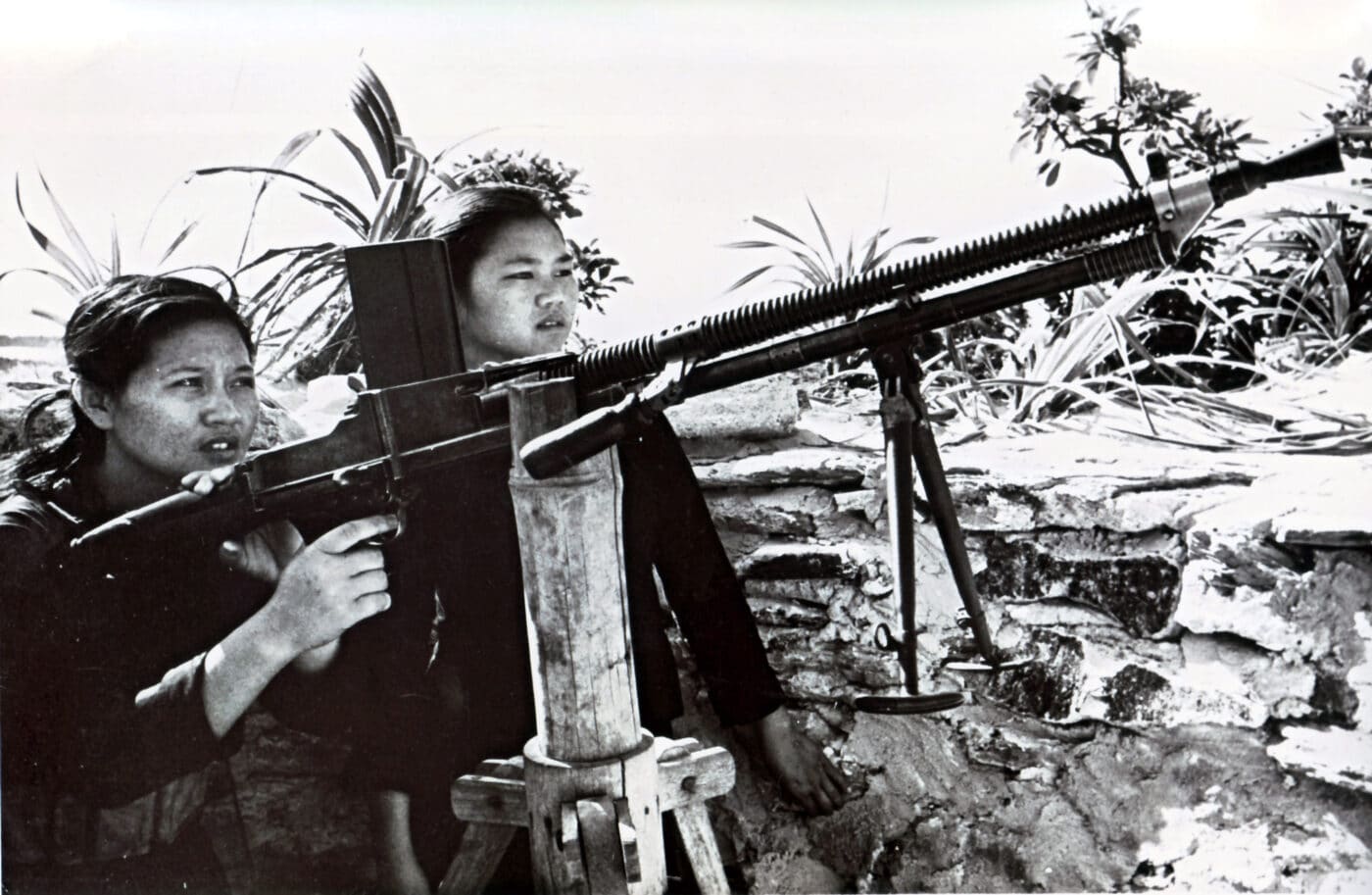
They were designed to move quickly and with great stealth, emerging from the mountains and jungles to ambush their South Vietnamese opponents. They were equipped with a variety of small arms. Additionally, the VC became quite adept at using booby traps against their opponents. In the early 1960s, the VC were highly successful, driving South Vietnamese government forces back and confining them to a handful of urban areas and isolated bases.
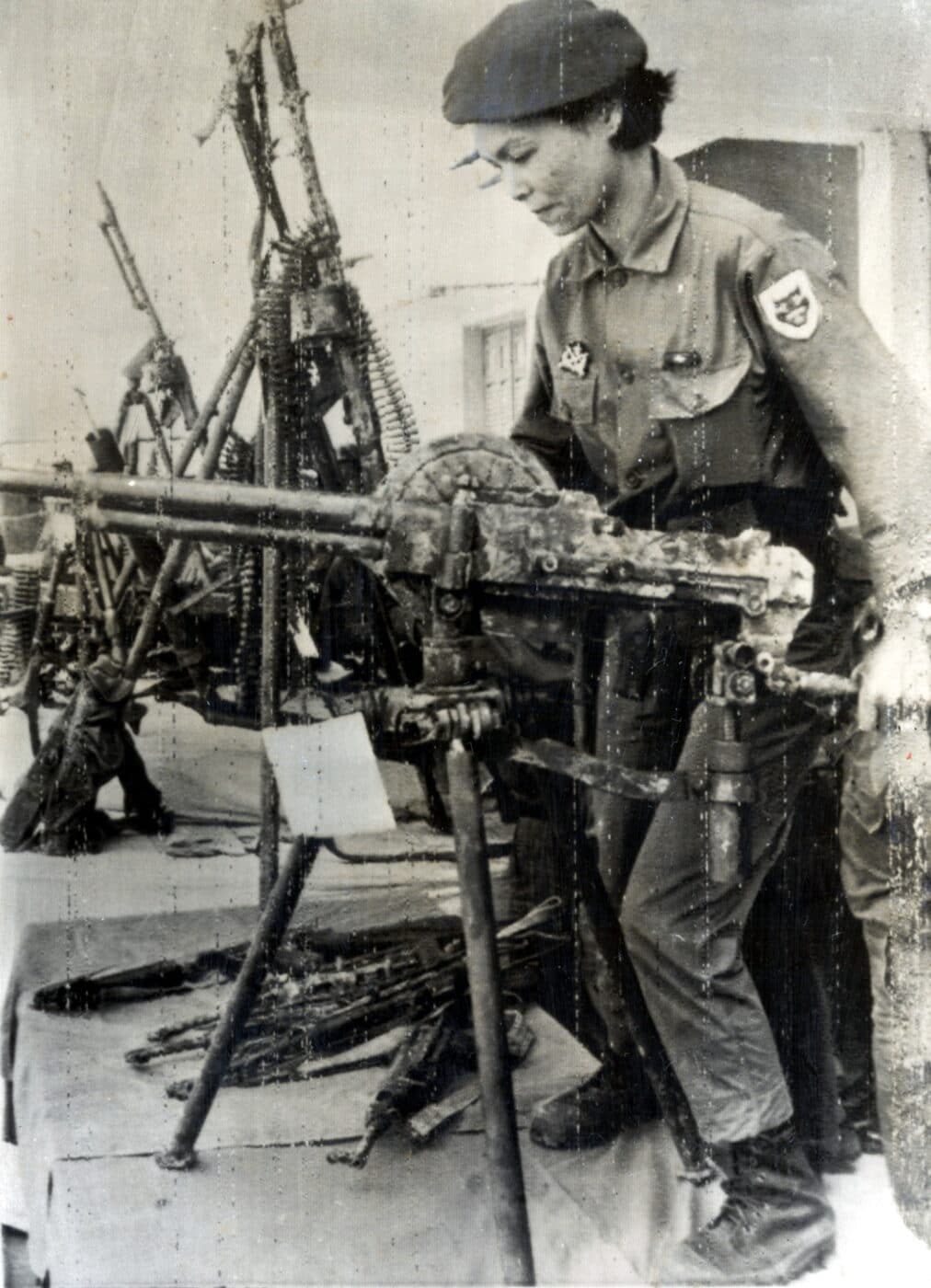
During 1964, the Viet Cong steadily increased their numbers to well over 100,000 men in the field, and their battlefield successes continued. At that point, there were only 23,000 American servicemen in Vietnam. During 1965, that number would grow to more than 184,000, and the Americans would be joined by 20,000+ troops from South Korea.
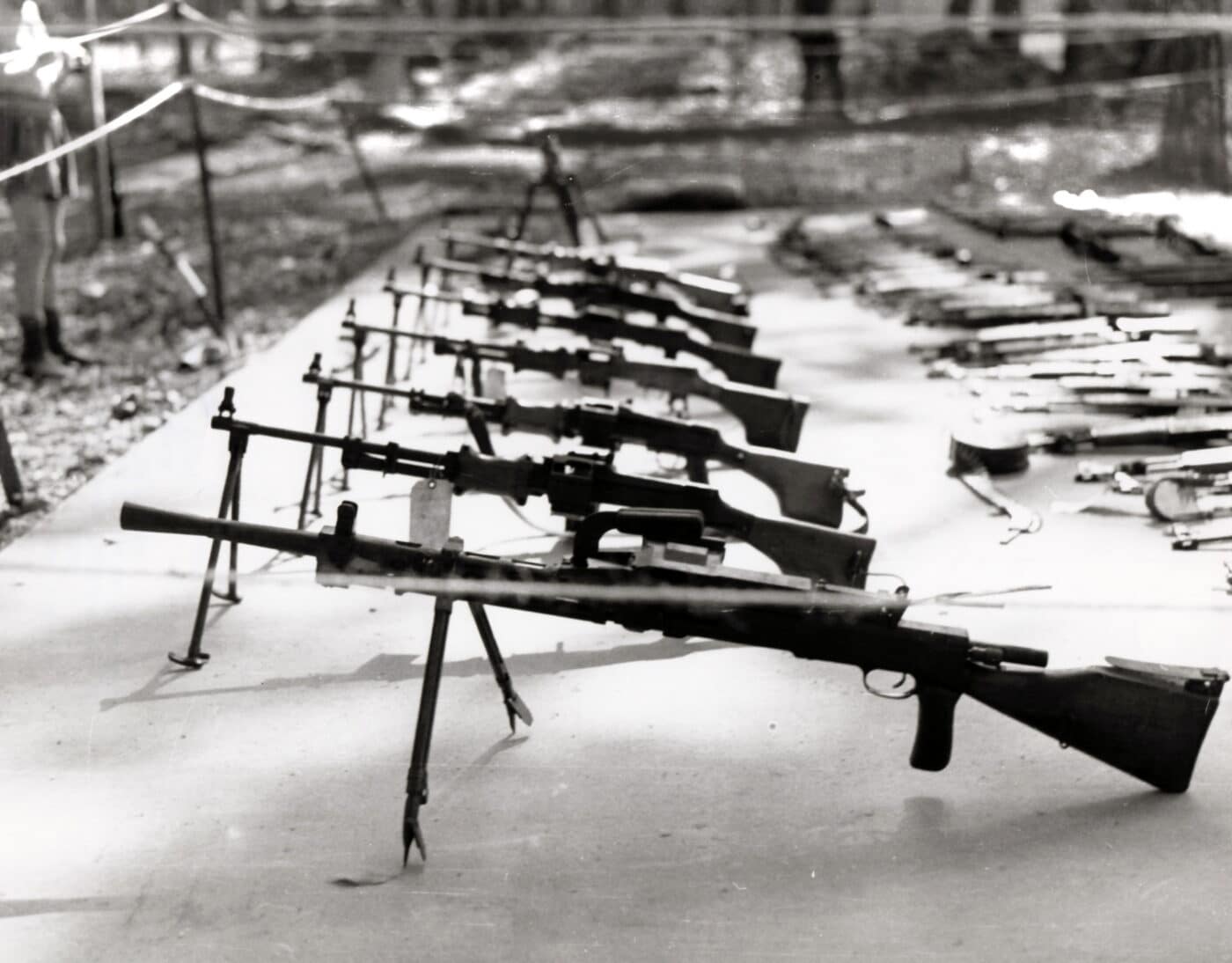
The combat situation changed dramatically for the VC during 1965, as their opponents became much more aggressive and equipped with the latest in modern weaponry.
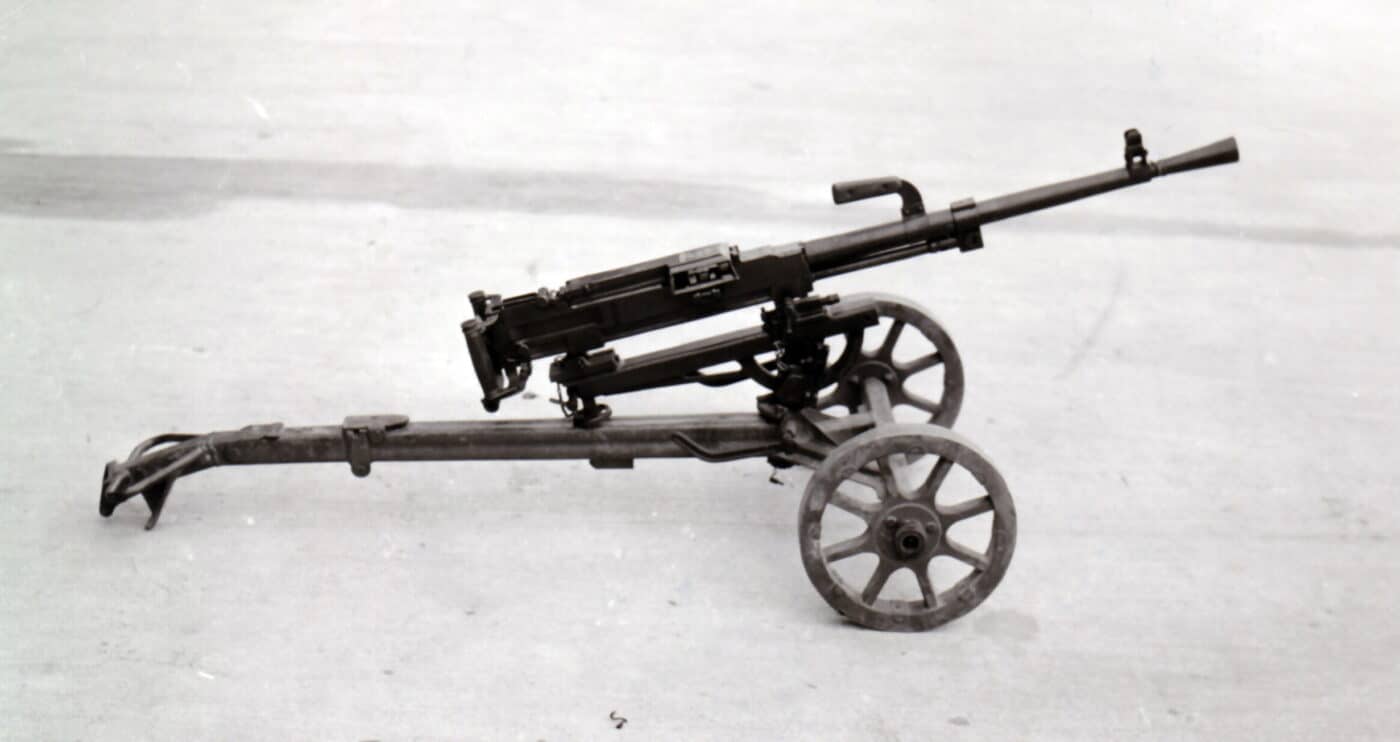
The RAND Corporation think tank interviewed hundreds of Viet Cong prisoners between 1964 and 1969. Their findings revealed the VC’s increasing need for heavier weapons, particularly to counter American airpower and armored vehicles.
Interviewees exposed to fighter bomber as well as helicopter attacks mentioned that they were afraid of armed helicopters, although they said these machines were highly vulnerable to ground fire. Their strafing was said to be very effective, often more effective than that by fighter bomber, because they can come close to their target, hover, and fire vertically into Viet Cong trenches and foxholes. Helicopter rockets, on the other hand, were regarded as not very effective.
Adjusting to Fight America
An October 1968 entry from a captured VC diary stated:
The fighting against the Americans nowadays is far different from the fighting against the French…the hardships and difficulties in the present anti-U.S. war are much greater, and the fierceness much more savage. Our troops did not have to sleep in underground trenches in the anti-French struggle and the French did not possess such barbarous killing means as the U.S.’s B52s.
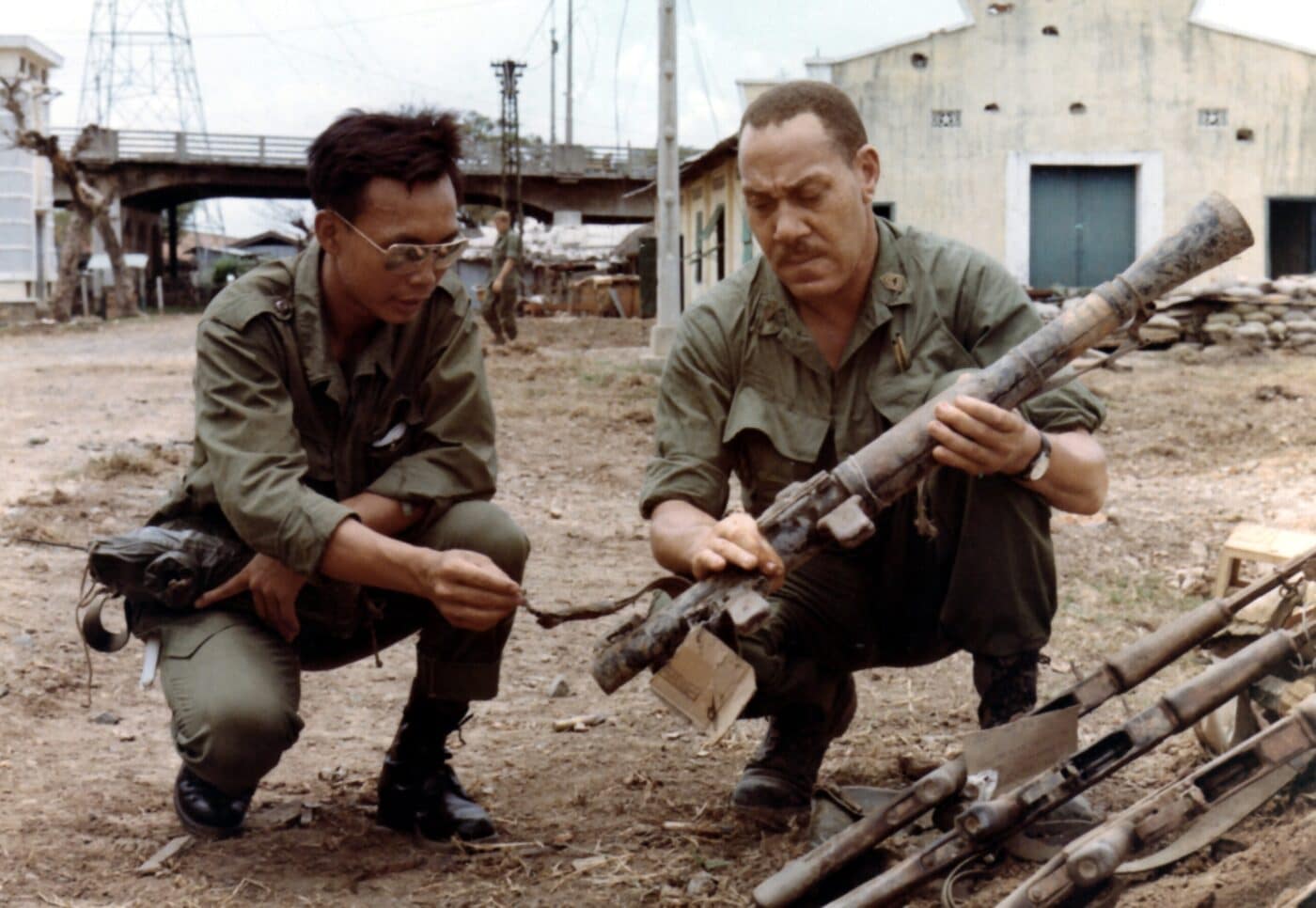
As America poured more military resources into Vietnam, the power of U.S. military technology began to take its toll on the Viet Cong. USAF bombing raids and U.S. Army helicopter gunships began to interrupt VC supply lines and strafed VC troop concentrations. On the ground, U.S. Army and Marine Corps armored units bullied the VC with M48 main battle tanks and the new M113 armored personnel carriers. Although there were limited opportunities for armored operations in Vietnam, when tanks and APCs were employed, they had a dramatic effect on the Viet Cong. A 1965 RAND report revealed:
Armor, particularly the M113, was cited by many interviewees as having a major influence on the outcome of combat and on the losses suffered by Viet Cong units, especially those not equipped with anti-armor weapons. Several instances were cited where Viet Cong units had panicked and suffered heavy losses when attacked by tanks or M113s. The interviews report, however, a steady increase in the availability of anti-tank weapons of Chinese origin.
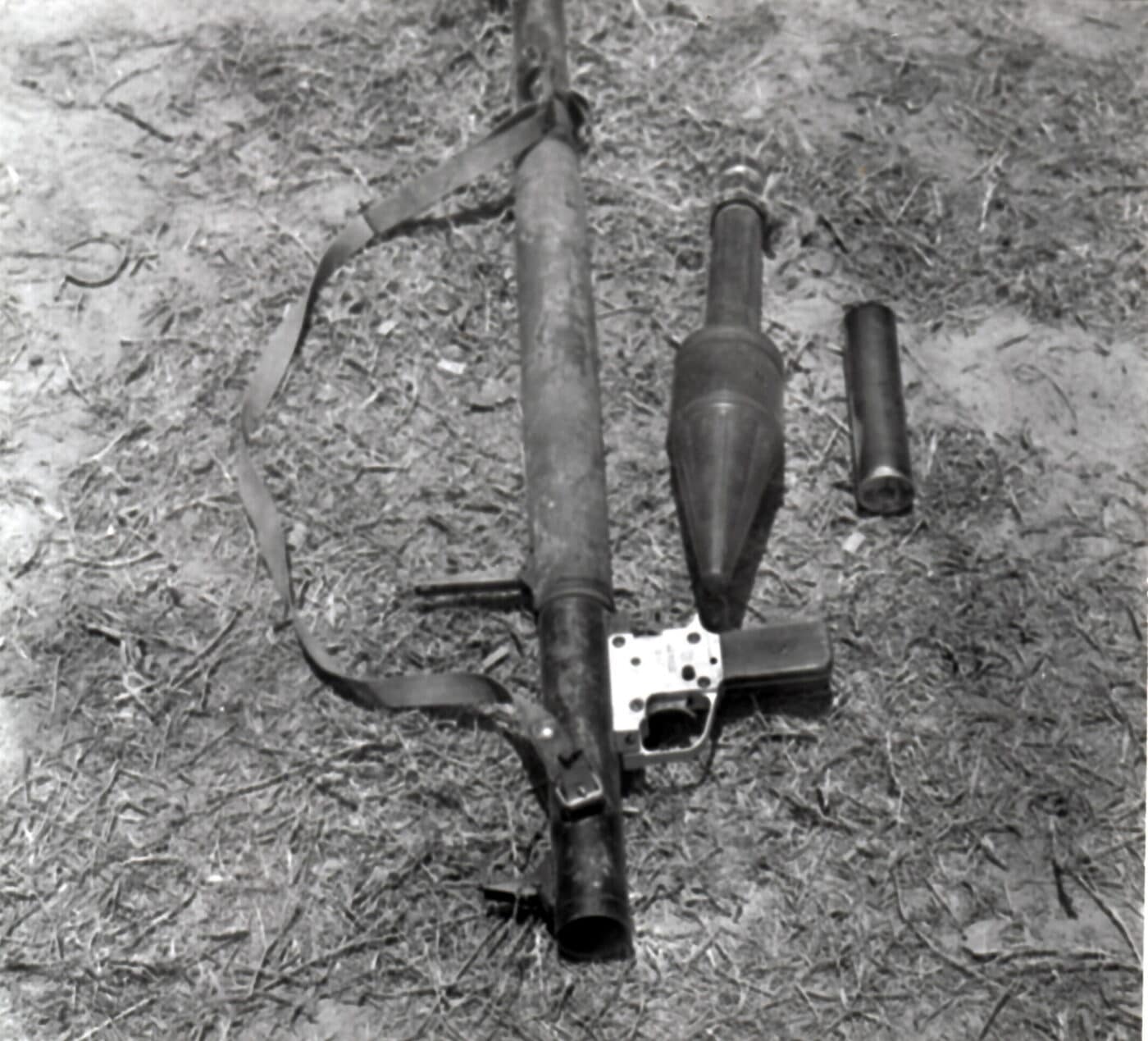
The new anti-tank weapon was the Soviet-designed RPG-2 (and its Chinese variant, the B40). This was a simple rocket-propelled grenade launcher firing an 82mm High Explosive Anti-Tank (HEAT) round that could penetrate up to seven inches of armor plate. The RPG-2 was light (10 pounds loaded) and gave the VC some stand-off capability against U.S. AFVs, with an effective range of about 150 meters. It was particularly effective against the aluminum alloy armor (44mm max) on the M113 armored personnel carrier.
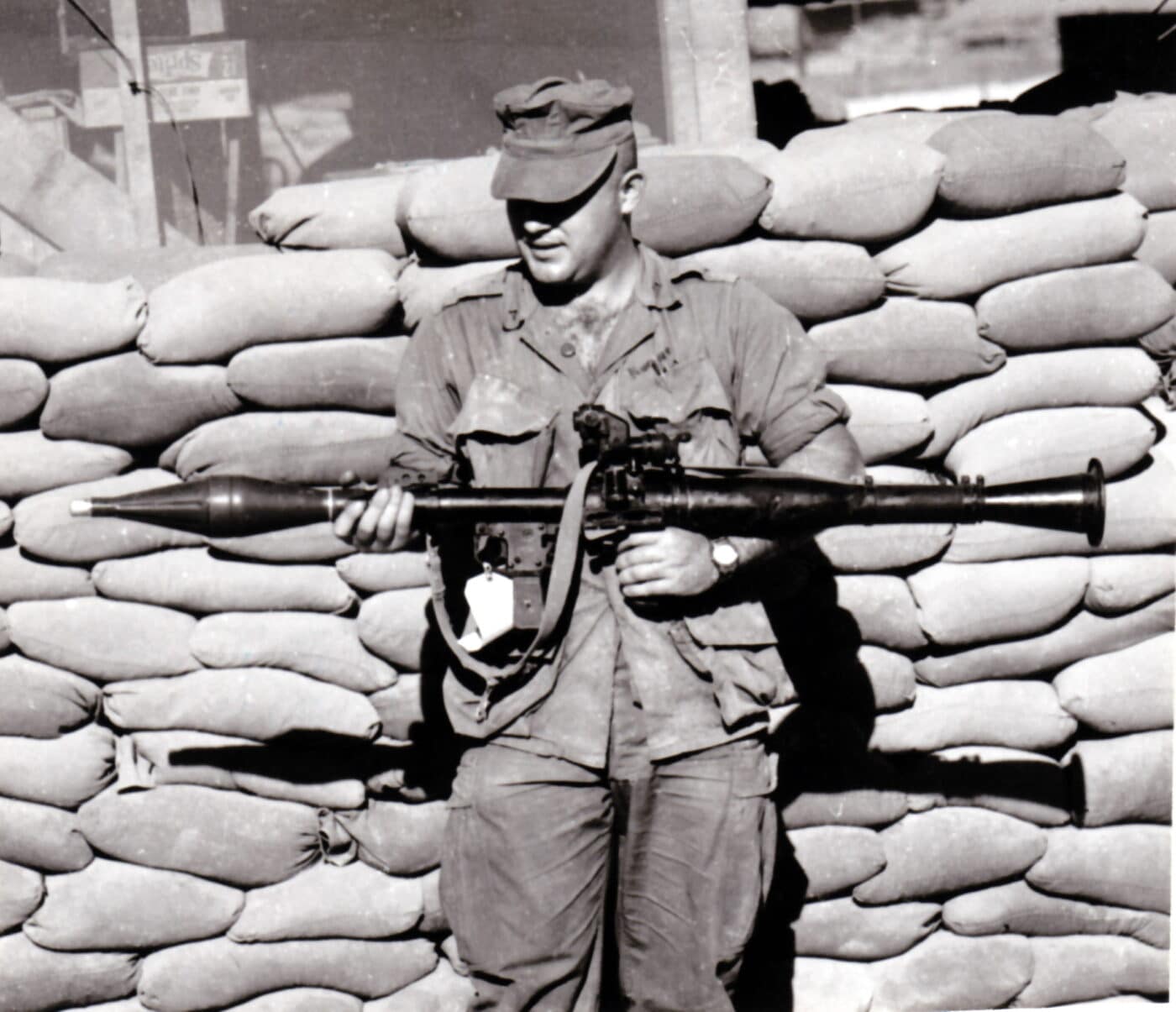
By 1968 the VC began to receive the much-improved RPG-7, doubling the effective range and nearly tripling the armor penetration. More importantly for the VC, the RPG-7 offered a high explosive/fragmentation round, giving them effective man-portable artillery.
The Helicopter
Main force VC, and to a lesser extent, local force VC infantry are trained to employ their weapons against Allied aircraft, particularly helicopters. The quality of the training is good, and all indications are that it is improving. Machine guns and automatic rifles are emphasized, but instruction is also given on the use of rifles, RPGs … in the anti-aircraft role. The NVA/VC emphasize that any weapon can shoot down an aircraft if properly employed.
1969 U.S. Army lessons learned report
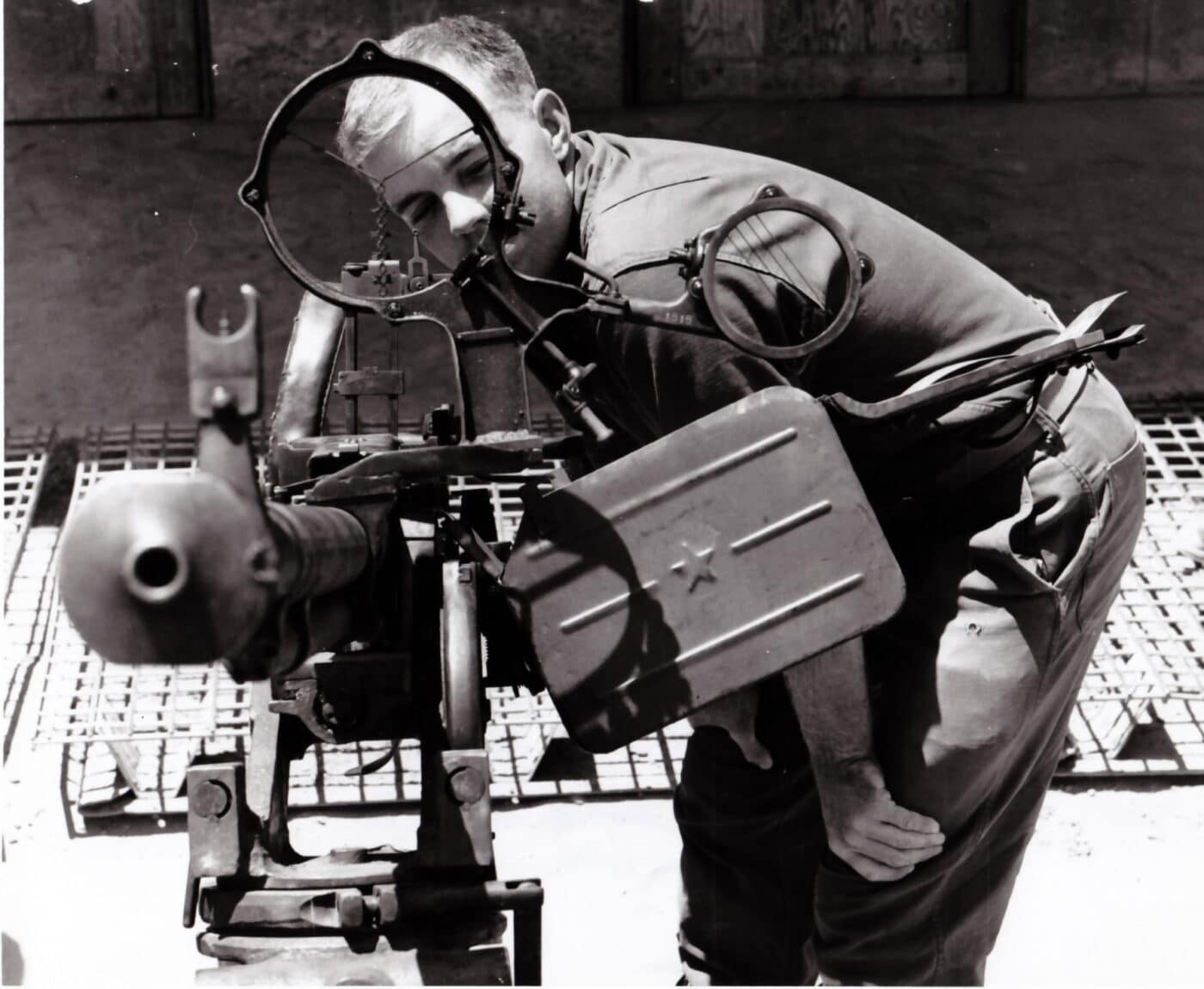
During the 1950s and 1960s, the U.S. military became somewhat preoccupied with the higher-farther-faster technologies of the nuclear age and the space race. But the war in Southeast Asia was rooted in the deadly practical mechanics of an infantry war. There was little the Viet Cong could do to counter high-flying U.S. jets, so they learned ways to avoid American aerial observation. U.S. helicopters, however, were quite a different story and posed a serious and immediate threat.
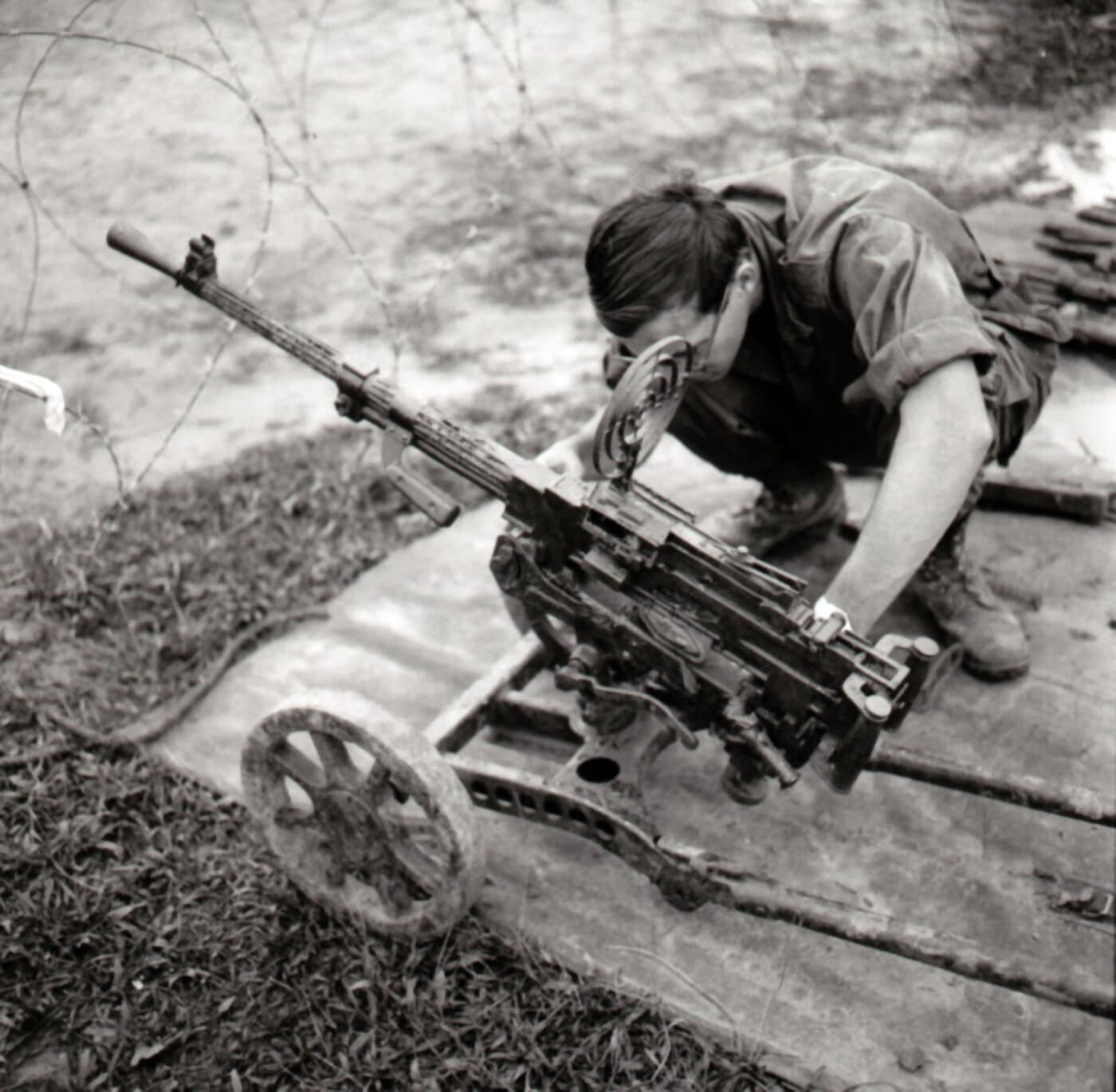
The VC learned that many of their infantry weapons could be used against helicopters at close ranges. Lacking dedicated anti-aircraft artillery, they adopted a World War II Soviet tactic of volley-firing infantry small arms at low-flying attack aircraft. As more SKS and AK-47 rifles became available to the Viet Cong, this tactic became more effective.
New and heavier weapons began to arrive in VC hands during 1966. One particularly effective MG was the DShK 12.7mm (12.7x108mm) heavy machine gun. This is a Soviet-designed weapon, weighing in at nearly 75 lbs. for the gun alone. It is not the equal of the U.S. Browning M2 .50 caliber machine gun (and the ammunition is not interchangeable), but even so, the DShK was a game-changer in helping the VC defend important positions from U.S. helicopter attacks. Firing at 600 rounds per minute, with an effective range of 2,000 yards, the DShK (or Chinese Type 54) was responsible for downing many U.S. and ARVN helicopters during the war.
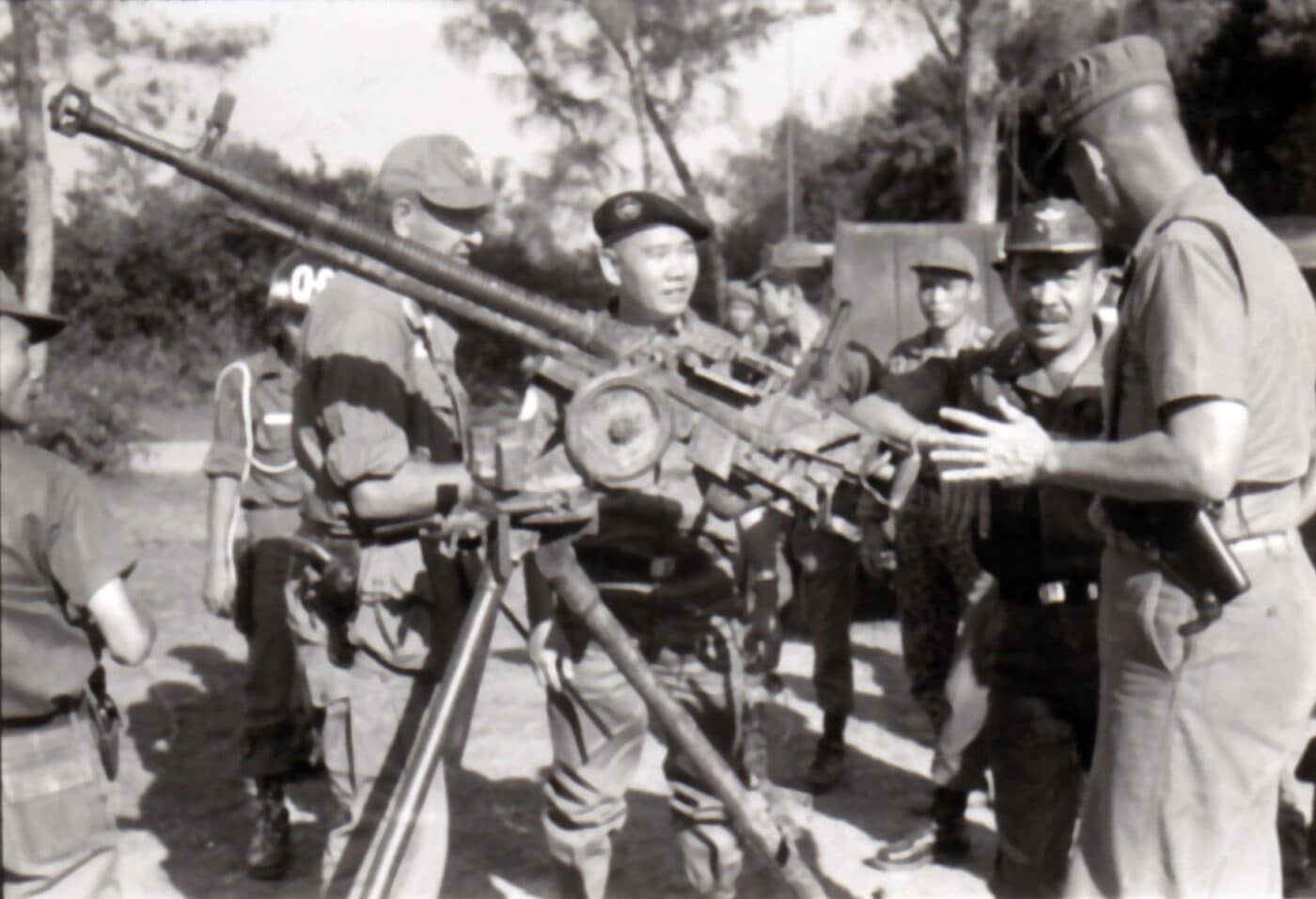
A 1969 U.S. Army report noted the growing effectiveness of Viet Cong AA defenses: “NVA/VC passive and active air defense organization, equipment training and tactics are effective. All indications are that they are improving.”
Squad Automatics
The Viet Cong happily accepted any light machine guns or automatic rifles into their arsenal. Their combination of light weight and high firepower were the right mix for VC hit and run tactics. The earliest squad automatic weapons available to the VC seemed more like pieces from a military history museum. Despite the age of some of these weapons, and the logistical problems that they presented, the VC showed that were still quite deadly on a modern battlefield.
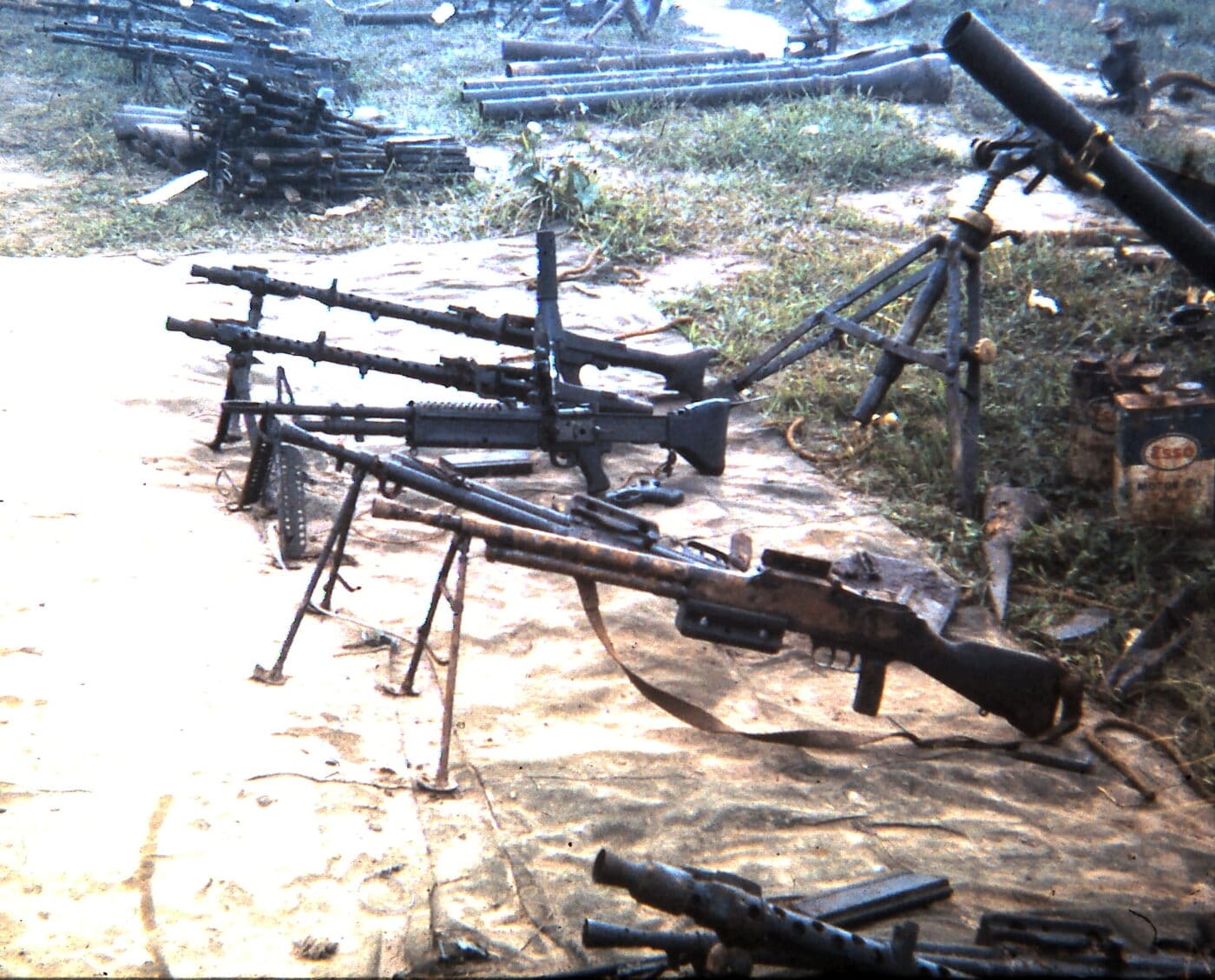
German MG34: Several hundred MG34s were provided to the Viet Cong from Chinese Communist stocks, as well as through the Soviet Union, who provided MG34s captured from the Germans in World War II, as well as guns manufactured in Czechoslovakia in the immediate postwar period. The MG34 (7.92x57mm) was a very well-made weapon offering a high rate of fire (900 rpm). These were often fed by a 250-round linked belt, or with the drum-like 50-round belt carrier.
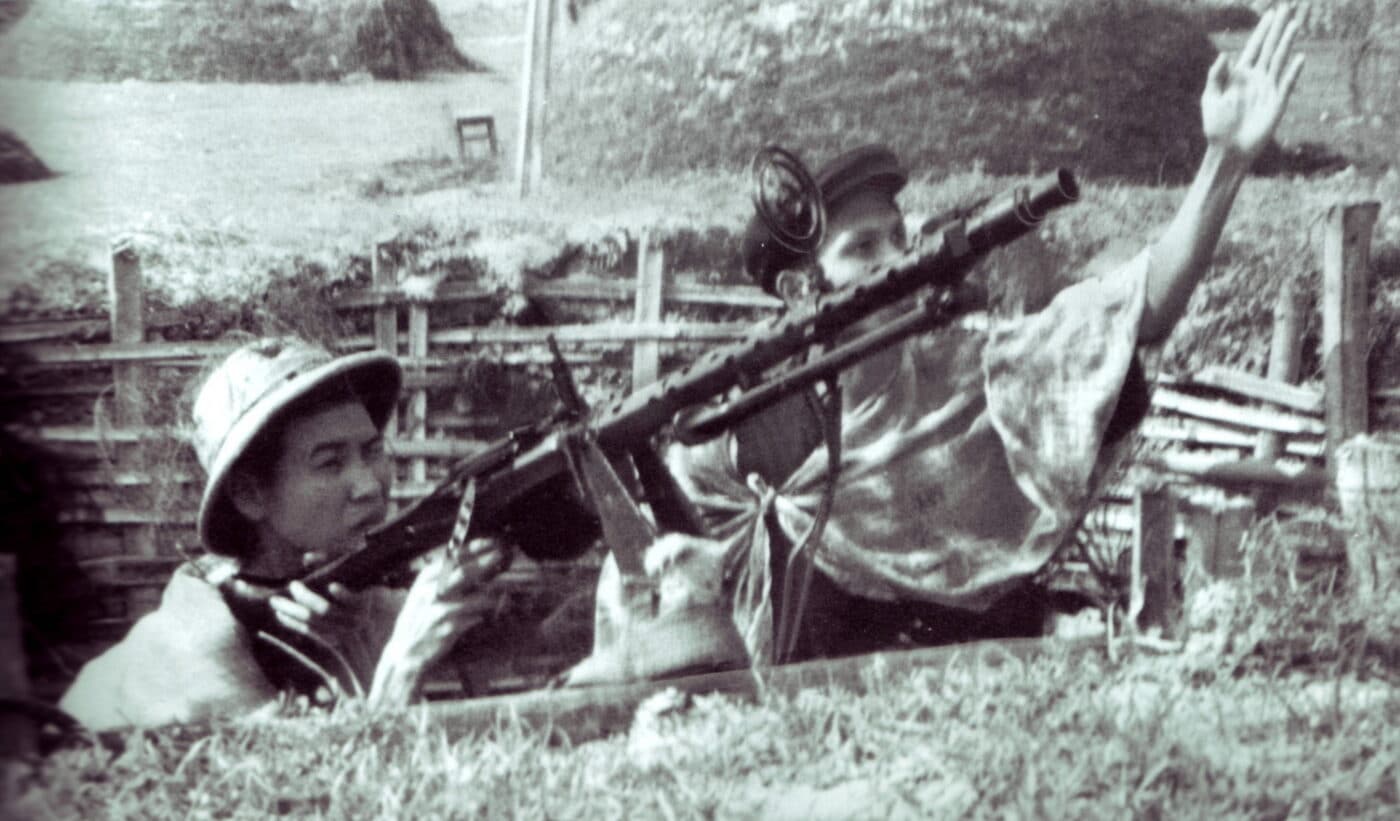
French FM 24/29: The FM 24/29 was a holdover from the Vietnamese war with the French. Many had been captured from French colonial forces and continued in service from the Viet Minh to the Viet Cong. Chambered in 7.5x54mm French, the FM 24/29 was fed by a 25-round, top-mounted box magazine. A handy weapon (just 20 lbs.) for the slightly built Vietnamese troops, the FM 24/29 served in Southeast Asia from the late 1940s through the end of the 1970s.
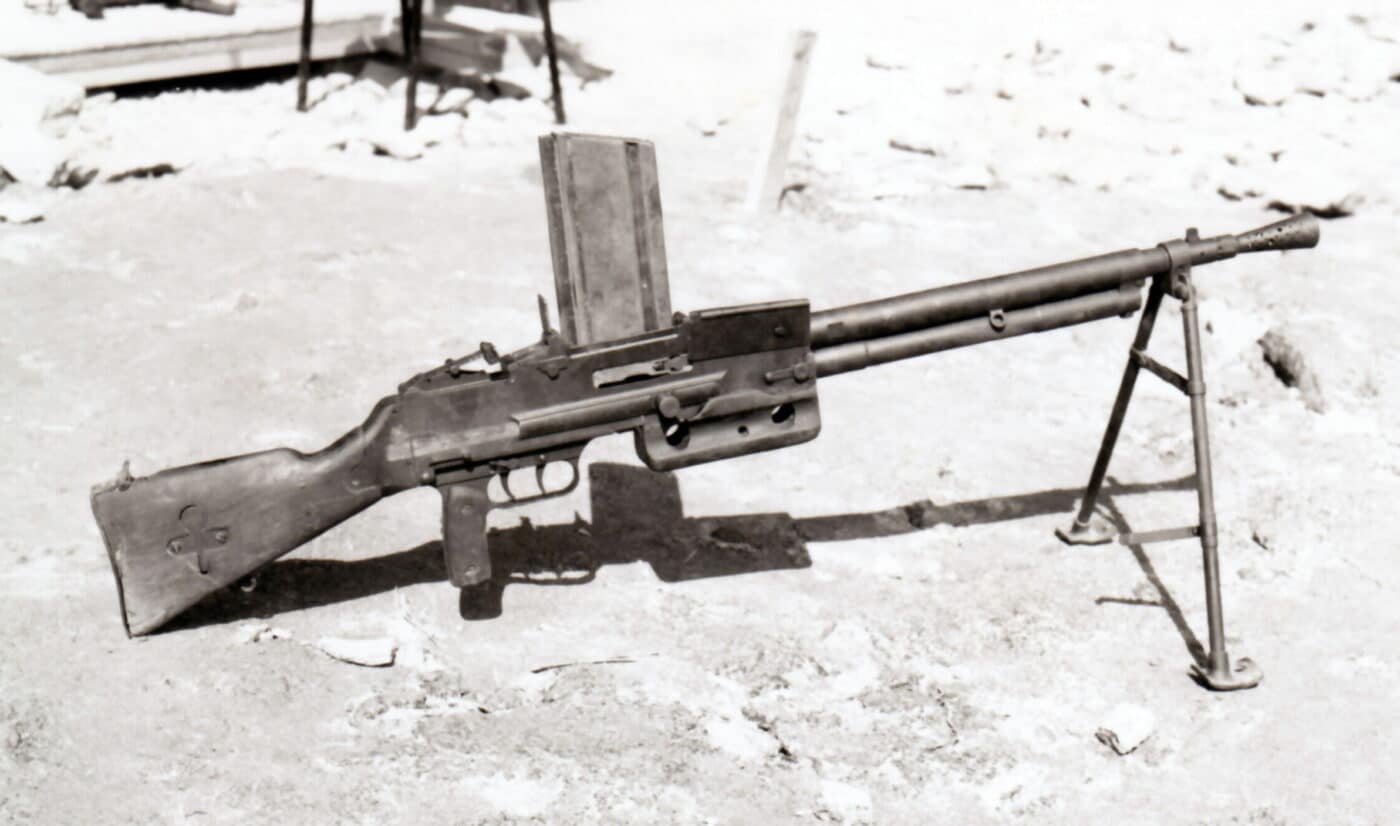
Czech vz. ZB26: The vz. 26 was a seminal light machine gun design of the mid-1920s, leading the British to develop the Bren gun. The Czechs were also very successful in selling the vz. 26 (chambered in 7.92x57mm) in the international market, particularly in China. Even after long service with the Chinese, many vz. 26’s were provided to the North Vietnamese, and a good amount of these excellent light machine guns (21.2 lbs.) were passed on to the Viet Cong.
Soviet DP LMG: The Viet Cong received numbers of all variants of the Soviet DP machine guns, ranging from the initial DP-27 (with a 47-round pan magazine) to the belt-fed RP-46, all chambered in 7.62x54mmR.
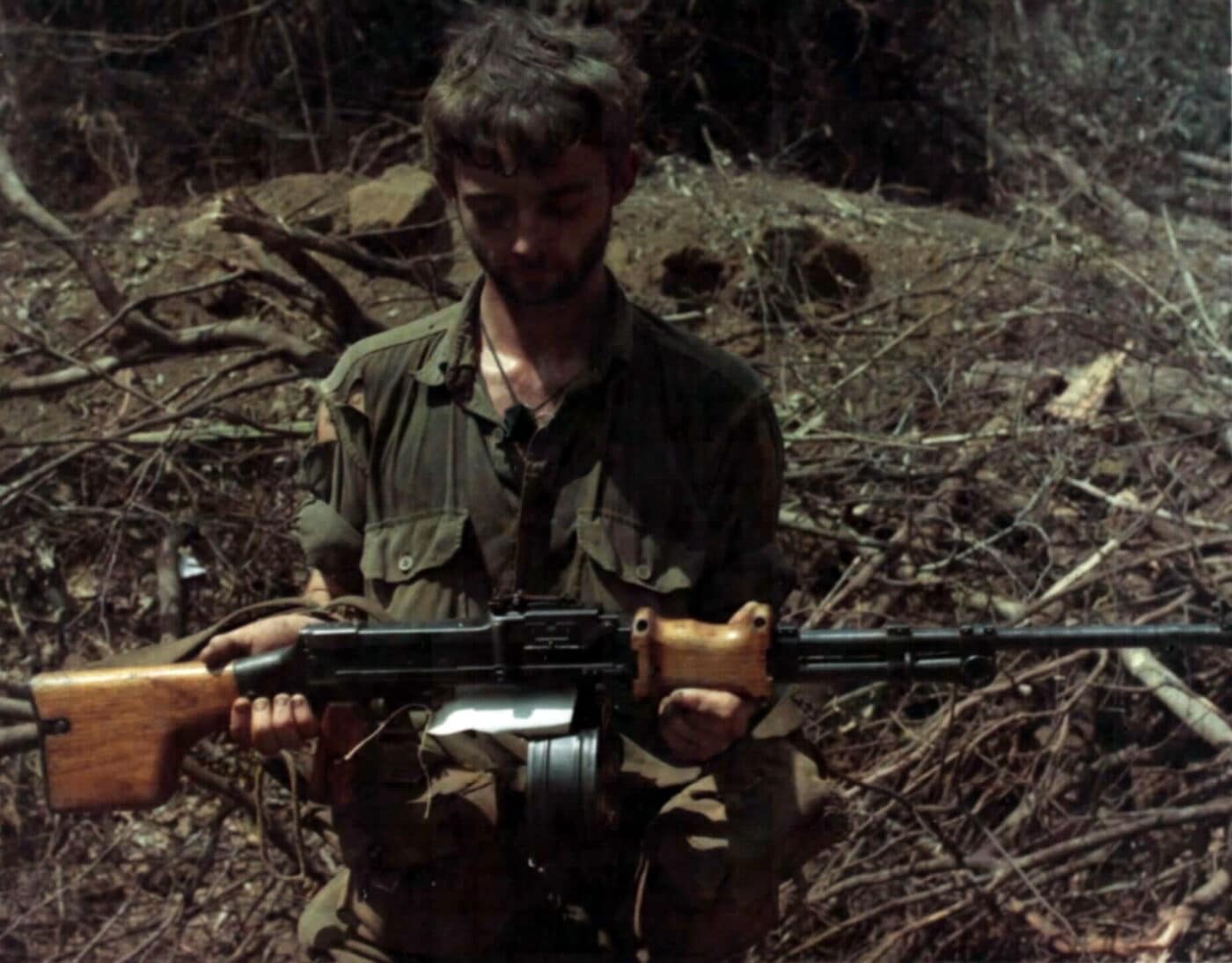
As the Soviet Union and Communist China began to provide more weapons to the NVA and Viet Cong, more recent communist LMGs began to appear in VC combat units.
SG-43/SGM Goryunov Medium MG: The SG-43 was an intermediate design that leveraged a particularly dense air-cooled barrel. Chambered in 7.62x54mmR, the SG-43 (30.4 lbs.) was normally attached to a wheeled mount (90.3 lbs.). While it was a reliable weapon, the great weight greatly restricted from VC offensive operations.
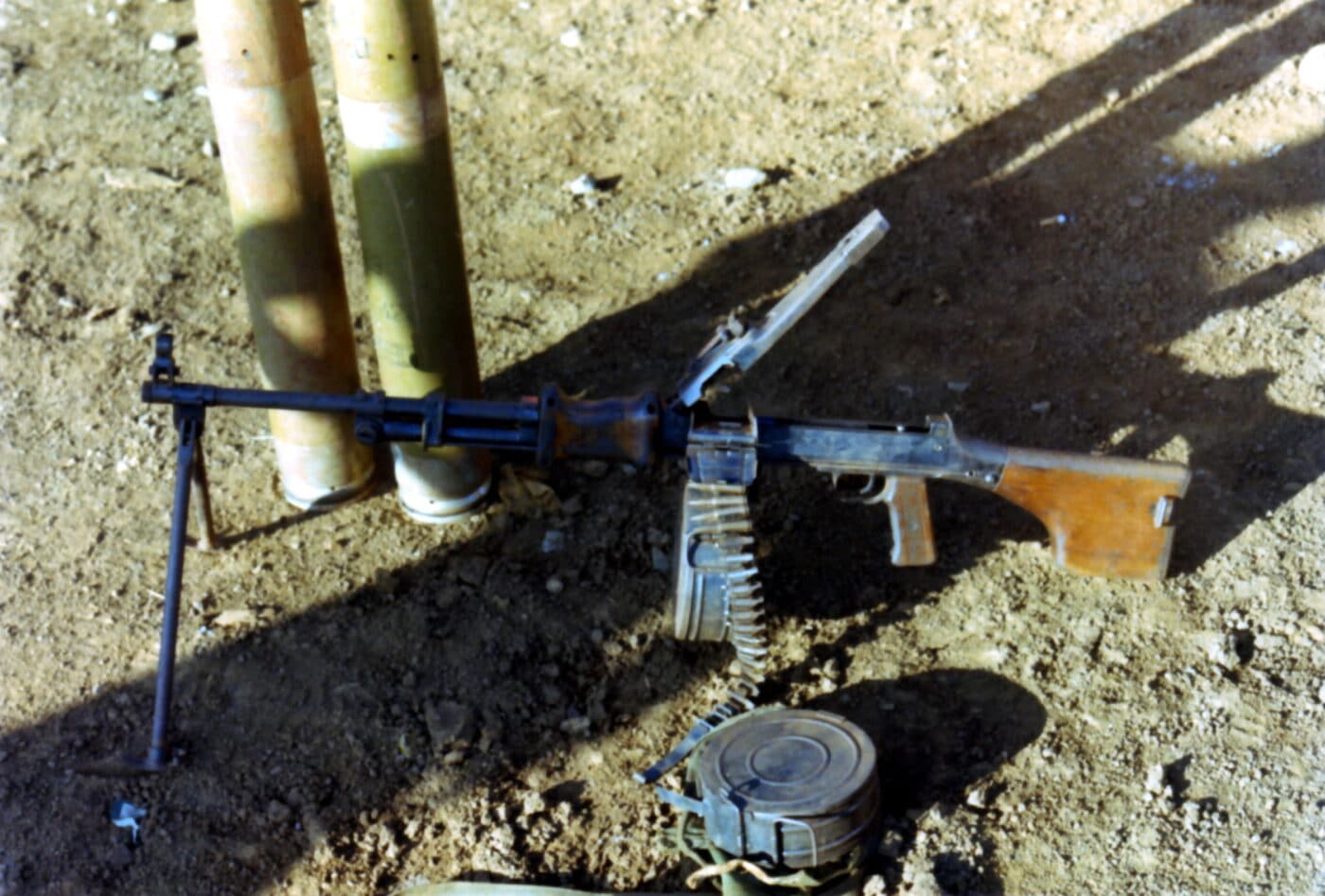
The RPD (or Chinese Type 56 LMG): As the RPD was replaced in Soviet service in the early 1960s, these weapons were passed on to various communist satellite nations. Chambered in 7.62x39mm and fed by a 100-round segmented belt contained in a drum, the RPD became the standard squad automatic of the Viet Cong by 1968. It provided a steady base of fire with an economical cyclic rate of 650 rounds per minute.
VC Rocket Power
As the U.S. military presence continued to grow in South Vietnam, American bases (particularly airbases) became highly lucrative targets for Viet Cong standoff attacks. These attacks were originally executed with heavy mortars (81 and 82mm), and the more mobile 60mm mortars. As time went on, the VC began to deploy greater numbers of 57mm and 75mm recoilless rifles, and while these weapons were more accurate, their firing signature often brought on swift and deadly retribution. The final advance in VC offensive heavy weapons was represented in a group of unguided artillery rockets.
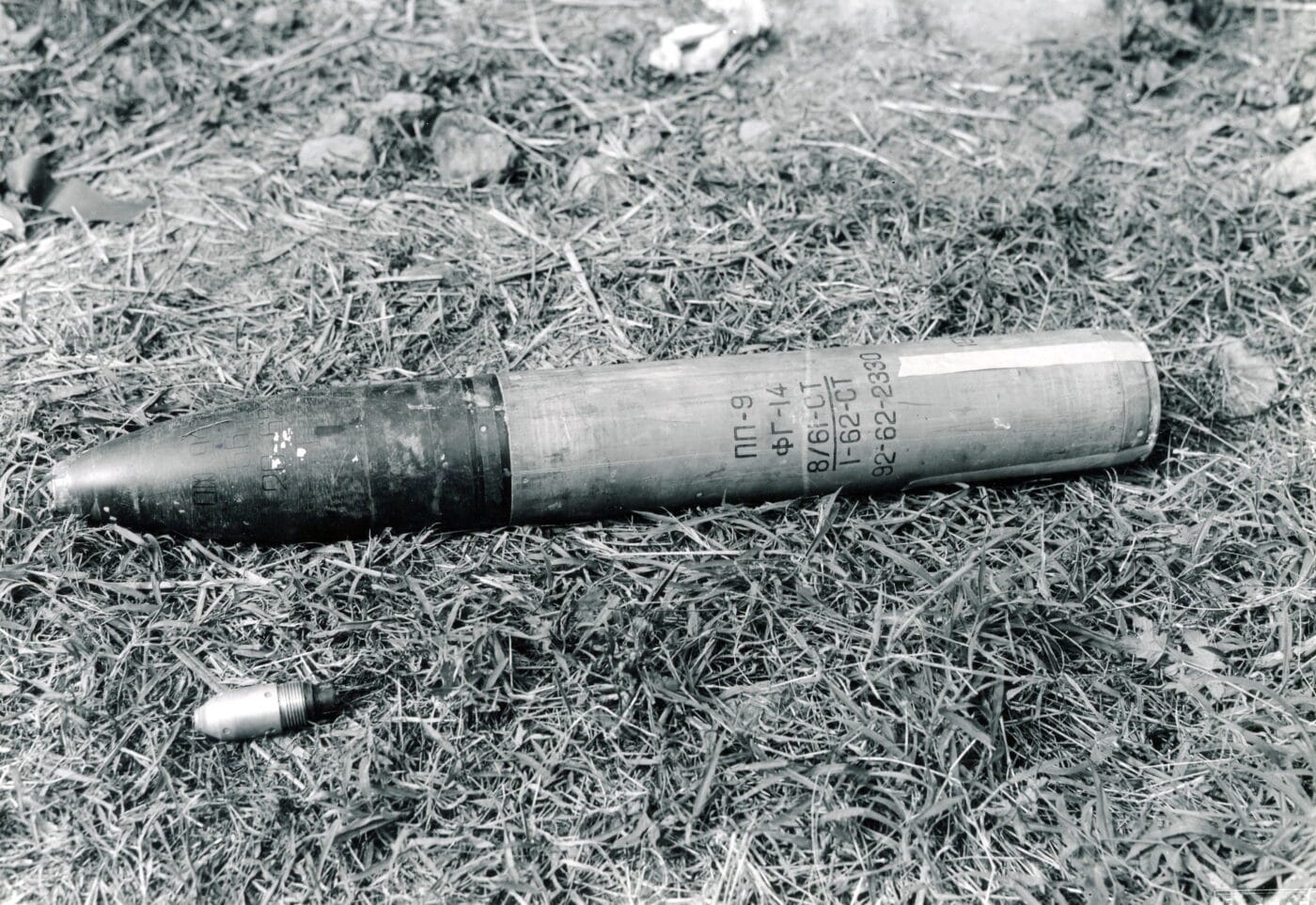
The rockets became a simple, easily transportable weapons for the Viet Cong. These were available in three sizes: 107mm, 122mm, and 140mm, and these could be fired from simple tube launchers or even earthen mounds. To combat American aerial observation of the launch signature of the rockets, VC rocket troops maintained a discipline of firing no more than five rounds from any tripod/tube launcher, or two salvos from the dirt ramps before they broke down their gear and disappeared into the jungle.
Editor’s Note: Please be sure to check out The Armory Life Forum, where you can comment about our daily articles, as well as just talk guns and gear. Click the “Go To Forum Thread” link below to jump in and discuss this article and much more!
Join the Discussion
Continue Reading
Did you enjoy this article?

 219
219






